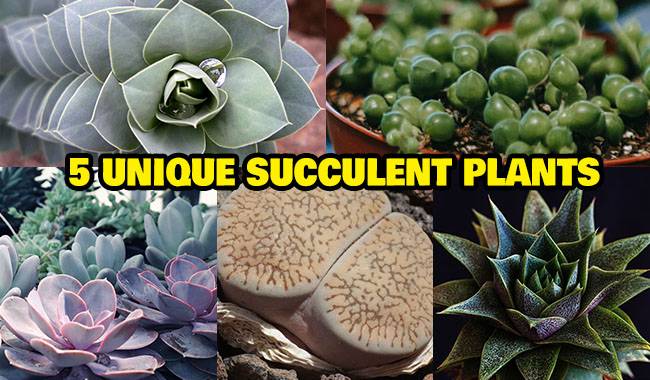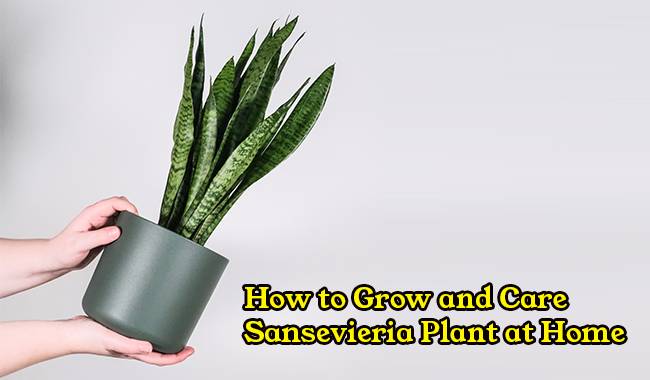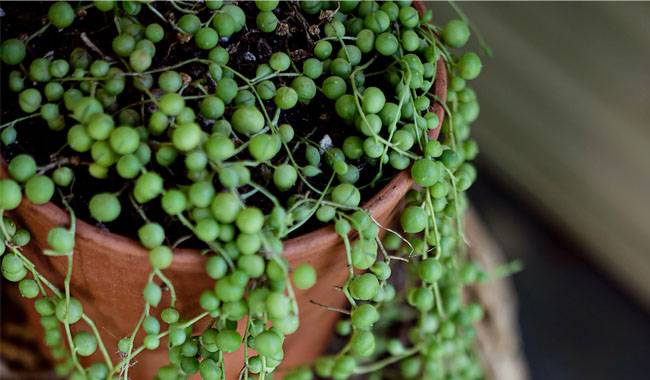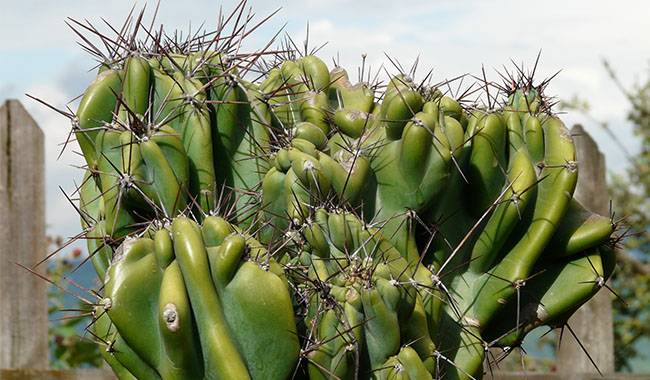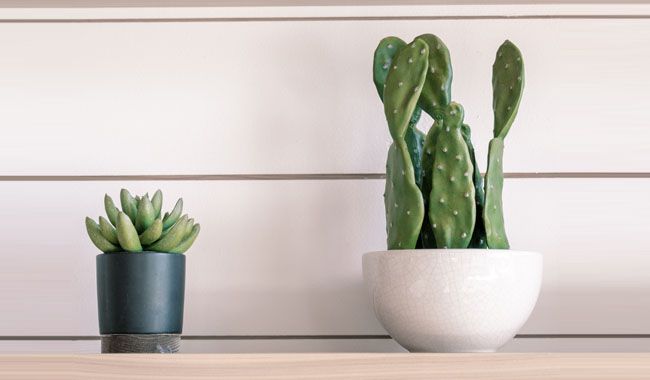
Opuntia (Prickly pear) is a true legend among cacti. Barely, perhaps the most famous cactus on our planet was not chosen by chance for the school experiment that introduced the amazing talent and structure of the cactus. Even today, Opuntia (Prickly pear) has not lost its industrial importance. However, it is rapidly losing its former popularity. Because of their growth rate and size, Opuntia (Prickly pear) has almost disappeared from our interiors, although new and interesting species have appeared. The ease of formation and control and the variety of options are often unfairly overlooked. However, the special beauty represented by the amazing genus Opuntia (Prickly pear) should be more relevant than decorating biological classrooms. This article will learn how to plant prickly pear cactus.
OPUNTIA (PRICKLY PEAR) PLANT DESCRIPTION
The appearance of Opuntia, which forms bizarre bushes and shapes, is almost inseparable from the Mexican landscape (so much so that Opuntia even appears on the national coat of arms). It is an ancient cultivar of historical value, having been used as a food and fodder plant thousands of years ago. But this does not mean that Opuntia (Prickly pear) fails in its ornamental qualities.
This cactus is known for the peculiar division of its stem. The articulated shoots are flat, disc-shaped, most often oval or almost circular, and less commonly cylindrical, branching and forming huge clumps over time. It is impossible to predict precisely where the segments will develop or from which “point” new segments will start to grow, making Opuntia (Prickly pear) a star full of surprises.
The very dense epidermis protects the juicy shoot flesh. Older stems gradually become woody with light brown crusts. Opuntia (Prickly pear) also has reduced cylindrical leaves that are visible on the young shoots. In the wild, Opuntia (Prickly pear) can grow to 6.5-13 feet (2-4 m) tall, but in a room, they rarely even reach 40 inches (1 m).
These spines are very dangerous. In addition, the large, hard, true thorns are not as traumatic as the tiny, sharp barbs, which have serrated edges around the papillae. They are easy to dislodge from the stem and challenging to remove from the skin, so you better handle this cactus with care. In animals, hookworms can be extremely irritating if swallowed.
The flowers of opuntia are spectacular. The short, single flowers in red, yellow, or orange arranged on one side of the petals look dazzling. Unfortunately, more often than not, Opuntia (Prickly pear) blooms are just a dream, as Opuntia (Prickly pear) blooms at a solid age and reaches a large size, which is almost impossible in a room.
CONDITIONS FOR GROWING OPUNTIA (PRICKLY PEAR) INDOORS
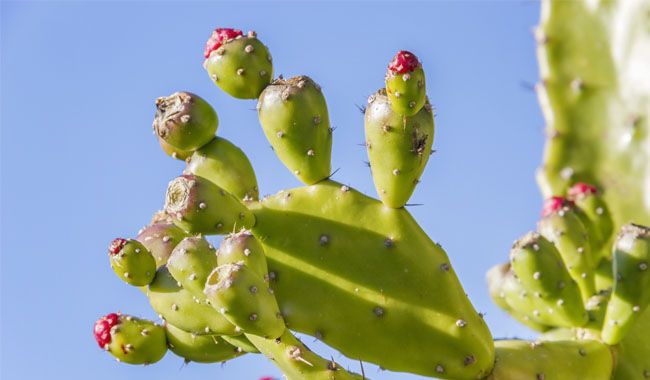
The warmest and brightest window is the ideal location for this unusual cactus. A special overwintering site is only needed for flowering.
Lighting and placement
Opuntia (Prickly pear) plants need the brightest possible light and cannot tolerate even a little shade, especially brighter ones. A western, eastern, or southern windowsill is the only way to keep them compact and densely branched. There is no need to add winter light for opuntia, but if the cactus stays in the same place, it must get used to bright light in spring, protecting it from direct sunlight for a few weeks.
Opuntia (Prickly pear) is not afraid of shifting, but not in the germination period. Even slight fluctuations in conditions and turns can cause all the buds to fall off en masse.
Temperature and ventilation
The optimum temperature for an active growing season is above 77 °F (25°C). This is a heat-tolerant cactus that easily tolerates temperatures above 86 °F (30 °C).
A cool rest period of 35-50 °F (2-10°C) with as much light as possible is only needed for flowering. If Opuntia (Prickly pear) stays in the living room during the winter, nothing bad will happen.
Opuntia (Prickly pear) likes fresh air and can be moved to the balcony or the garden as the steady summer heat arrives. If taking the cactus out of the room and into the open sky, it is best to allow it to gradually adapt to the changing conditions, protecting it from direct sunlight for the first few weeks. Many species can withstand a slight frost, but do not experiment: it is worth bringing Opuntia (Prickly pear) back indoors at night when the temperature approaches 32 °F (0°C). This cactus is not afraid of draughts.
CARING FOR OPUNTIA (PRICKLY PEAR) AT HOME
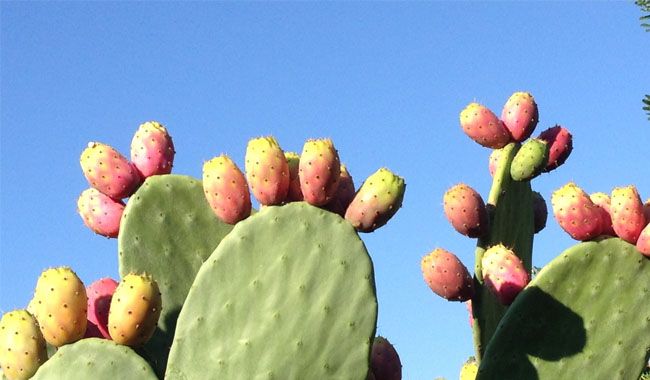
Opuntia (Prickly pear) needs to be handled with great care, and the prickly prickles that tend to fall off do not need to be touched accidentally. Cleaning the plant is a huge problem because of the prickly borer, but being hygienic and dust-free is still one of the keys to a healthy cactus, along with careful watering.
Watering and humidity
There is only one difficulty with watering Opuntia (Prickly pear) – under no circumstances should the stems be soaked. It is because of the tendency to rot if you are not careful that it is easier to water an Opuntia through a tray, as it is not always convenient to make sure that the water reaches only the edge of the pot all the time. Opuntia (Prickly pear) is a large, fast-growing cactus, so it must be watered heavily, draining off the excess water and allowing the soil to dry out from above. Opuntia (Prickly pear ) plants prefer to be watered in the evening in summer.
It is best to stop watering altogether during the stationary period if the plant is sent to a cooler location. When overwintering in a warmer location, minimal, supportive watering (about once a month) is all that is needed.
Feeding and fertilizer composition
Add standard batches of fertilizer to the water in spring and summer only. For opuntia, 1 application of fertilizer per month is sufficient.
Not only can fertilizers specific for cacti and succulents be used, but other fertilizers with a lower nitrogen content (the standard dosage can be reduced by a few times.) Opuntia (Prickly pear) are extremely sensitive to excess nitrogen. No attempt should be made to use organic fertilizers.
Pruning and shaping Opuntia (Prickly pear)
This cactus can be shaped as you see fit – remove the parts that cause poor compactness and elongation, stunting or damage, sling, renew with red heart pruning or replace with younger Opuntia (Prickly pear). These segments can be easily separated, and there is no need to cut them open. The main thing to remember is to treat the wounds and let them dry well.
Transplanting, containers and substrates
Only young cacti require frequent transplanting. Adult opuntia is transplanted in early spring in years when there are signs of insufficient space for root development.
Opuntia (Prickly pear) requires stable containers. Unlike many cacti, Opuntia (Prickly pear) can be planted in deep, spacious pots better suited to its spreading and unpredictable branching as it grows.
It is best to choose a special cactus substrate for the potting soil. Opuntia (Prickly pear) prefers slightly acidic soil. Permeability is the key, and coarse sand and other loosening agents must be present.
Opuntia (Prickly pear) plants should be transplanted with a dry root ball and not watered after transplanting. It is best to place the plants in a warm, semi-shady place to compensate for stress. Watering and regular care should be resumed only after a week to give the plants time to acclimate.
Diseases, pests and cultivation problems
Opuntia (Prickly pear) are more often affected by lack of light, moisture, and over-watering and respond by shriveling and developing soft spots of decay, stretching, twisting, and stopping growth, often by drying out or discarding young parts. Sometimes spider mites, scale mites, and other pests are found on them, but usually only on older cacti due to lack of light. If pests are present, it is best to start an insecticide treatment straight away.
Propagation Opuntia (Prickly pear)
Cuttings can easily propagate this cactus. Dry mature, strong, and healthy shoots and allow them to root and germinate for up to two weeks. Root in sand or other loose, slightly moist soil, digging only a few millimeters into the bottom of the fragment and securing the plug to a small peg for stability.
VARIETIES OF OPUNTIA (PRICKLY PEAR)
Best small cacti
O. cymochila
O. fragilis
O. humifusa
O. macrorhiza
O. phaeacantha
O. polyacantha
O. pusilla
Best large cactus
O. alta
O. cacanapa Ellisiana
O. chlorotica varieties
O. engelmannii
O. ficus-indica (sweet fruit)
O. lindheimeri




